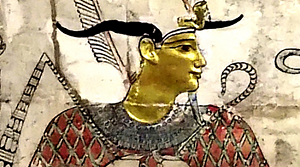Research office
Research

Exceptional discoveries in the latest campaign of the Oxyrhynchus Archaeological Mission led by the IPOA
The excavations, carried out between November and December 2024, have uncovered unique remains, which allow us to deepen our knowledge of funerary practices, religious life and monastic activity in Ancient Egypt
The Oxyrhynchus Archaeological Mission, led by the Institute of Ancient Near East Studies of the University of Barcelona (IPOA), linked to the Faculty of Philology and Communicationunder and the direction of Ignasi-Xavier Adiego, has concluded its latest campaign, between November and Decembre 2024, with findings of exceptional historical and archaeological relevance.
Among the most remarkable discoveries are 52 mummies from the Ptolemaic period, 13 of which had golden tongues in their mouths, a symbol of preparation for the afterlife. One of the mummies had two golden tongues, and another had a gold plate decorating its fingernails. Objects of great value were recovered from the same site, such as a heart scarab in its original position, amulets with figures of Egyptian divinities such as Horus, Thoth and Isis, and a terracotta of the god Harpocrates.
Excavations also revealed the structure of a Ptolemaic-era tomb containing some 300 mummies. This tomb, with three burial chambers and a vaulted ceiling, is remarkable for its walls decorated with texts and polychrome scenes depicting funerary rituals and divine figures such as Anubis, Osiris, Atum and Nut. In addition, four limestone sarcophagi have been discovered in the same context.
Another of the major advances of the campaign was the reactivation of the excavations at the Saint Cyril Coptic church, a Christian basilica dating from the 5th to the 7th centuries. This large building, richly decorated in sycamore, offers new clues for understanding the monastic movement in Egypt during the first centuries of Christianity, as well as the economic and administrative role of the monasteries during this period.
The mission, led by Esther Pons and Maite Mascort, is supported by the Spanish Ministry of Culture, the University of Barcelona, the Palarq Foundation, the Catalan Society of Egyptology and AIXA Serveis Arqueològics, in addition to the collaboration of the Egyptian Supreme Council of Antiquities and the University of Cairo. The findings not only contribute to enriching Egypt’s archaeological heritage, but also offer new insights into the ritual practices and beliefs of the Ptolemaic and Roman periods.
These discoveries, the result of decades of constant work at Oxyrhynchus, reaffirm the UB’s commitment to archaeological research of excellence and the preservation of universal cultural heritage.



